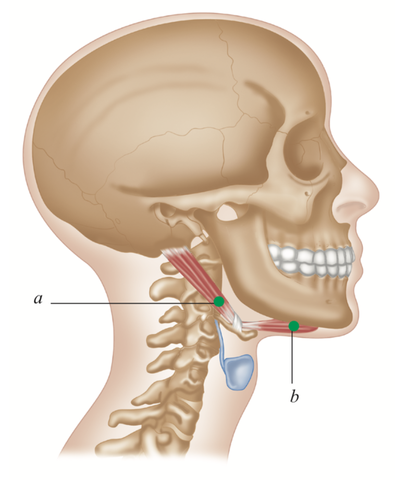Performance Therapy — Trigger Point Therapy
Trigger Point Therapy: Digastricus
Posted by Stuart Hinds on
About the digastricus From the Latin digastricus: having two (muscle) bellies Origin Anterior belly (a): digastric fossa on the inner side of the lower border of the mandible, near symphysis. Posterior belly (b): mastoid notch of the temporal bone. Insertion Body of hyoid bone via a fascial sling over an intermediate tendon. Action Raises hyoid bone. Depresses and retracts mandible as in opening the mouth. Nerve Anterior belly: mylohyoid nerve, from trigeminal V nerve (mandibular division).Posterior belly: facial (V11) nerve. Trigger Point Referred Pain Anterior: lower four incisor teeth, tongue, and lip, occasionally to chin.Posterior: strong 2 cm zone around...
- 0 comment
- Tags: Neck, Trigger Point Therapy
Three stretches for latissimus dorsi
Posted by Stuart Hinds on
Common daily activities such as gardening can lead to active trigger points in latissimus dorsi which in turn can lead to painful and debilitating symptoms. Trigger points in this large muscle can be associated with a number of common conditions including: “Thoracic” back pain that is constant in nature and unrelated to activity Frozen shoulder Thoracic outlet syndrome Back pain turning in bed Dull ache under shoulder blade Sharp pain in the back of shoulder when resting on elbows Pain reported when lifting the arms (eg. reaching up to a shelf or changing a light bulb). These trigger points are...
Trigger Point Therapy for the Hamstrings
Posted by Stuart Hinds on
Because the hamstrings have their origin at the sitting bones - Long periods of sitting may affect their function We rely on our hamstring muscles for walking, jogging, running and jumping. These are the workhorse muscles that enable us to flex our knees and extend our hips at the beginning of each step that we take. When we are walking, jogging or running, our hamstrings are antagonists to the quadriceps muscles in the action of deceleration of knee extension. Anatomy The hamstrings consist of three muscles. From medial to lateral they are the semimembranosus, semitendinosus, and biceps femoris. Origin Ischial...
Pectoralis Minor Release
Posted by Stuart Hinds on
The pectoralis minor responds well to treatment using the forearm. Dry needling can also be used to great effect, but only if you are very familiar with the anatomy of the area. Trigger points in pectoralis minor are often associated with elbow pain Along with the pectoralis major, the pectoralis minor forms the anterior wall of the axilla. The pec minor is too often overlooked and is as susceptible to trigger points as it's larger neighbour, pectoralis major. Trigger Points - Referred Pain Trigger points in the pec minor are a common cause of anterior shoulder pain, but as with the...
Taping for Trigger Points - Which Tape to Use?
Posted by Stuart Hinds on
Taping for Trigger Points Kinesiology tape can help to provide an accumulated off-loading effect by lifting the tissue around trigger point sites. When applied correctly, this allows an unloading to the vascular, nerve and the fascia to allow the treatment process to continue. For more information about taping for trigger points, please see the NAT course details below. NAT - Trigger Point Foundation Course (10 CPE) About the author Stuart Hinds is one of Australia’s leading soft tissue therapists, with over 27 years of experience as a practitioner, working with elite sports athletes, supporting Olympic teams, educating and mentoring others...
- 0 comment
- Tags: Taping, Trigger Point Therapy




